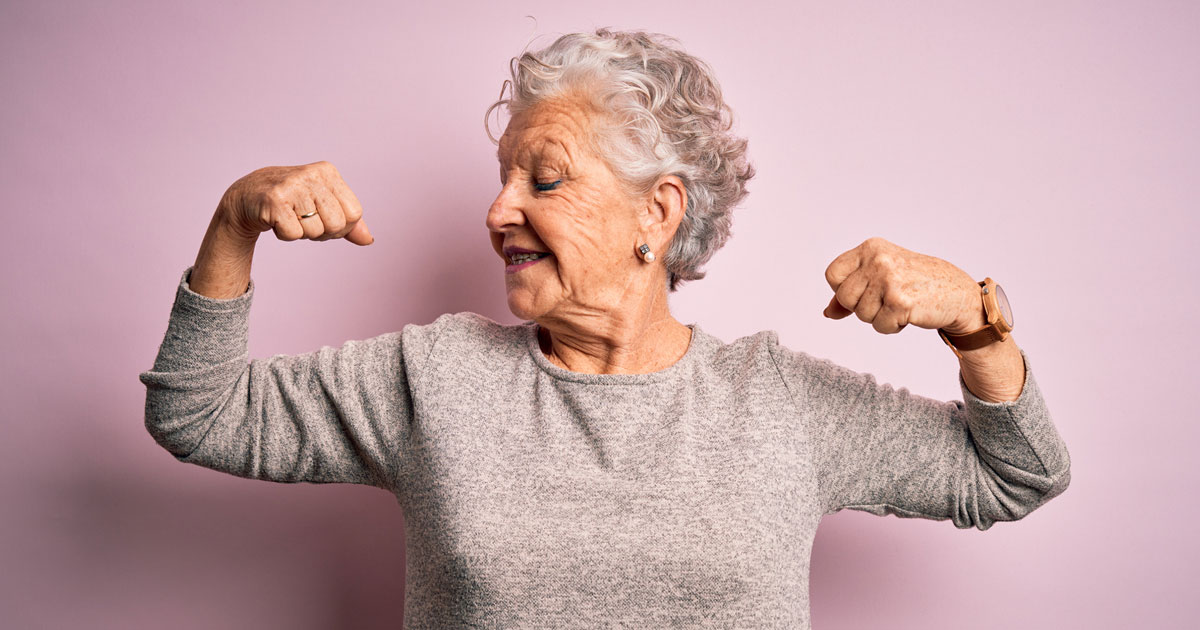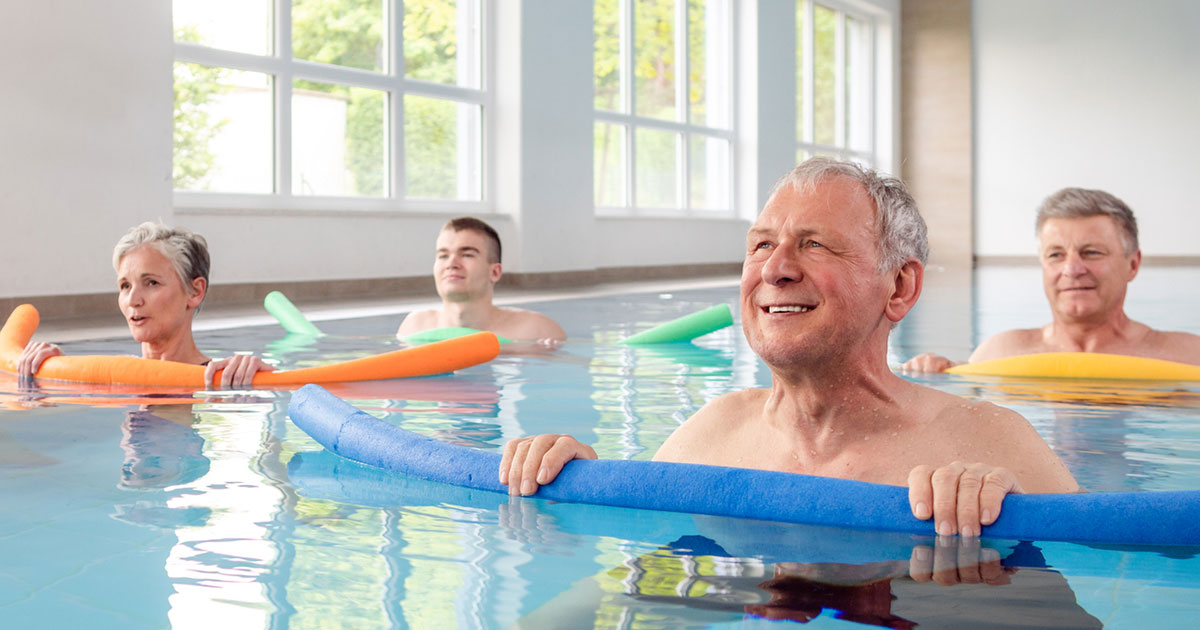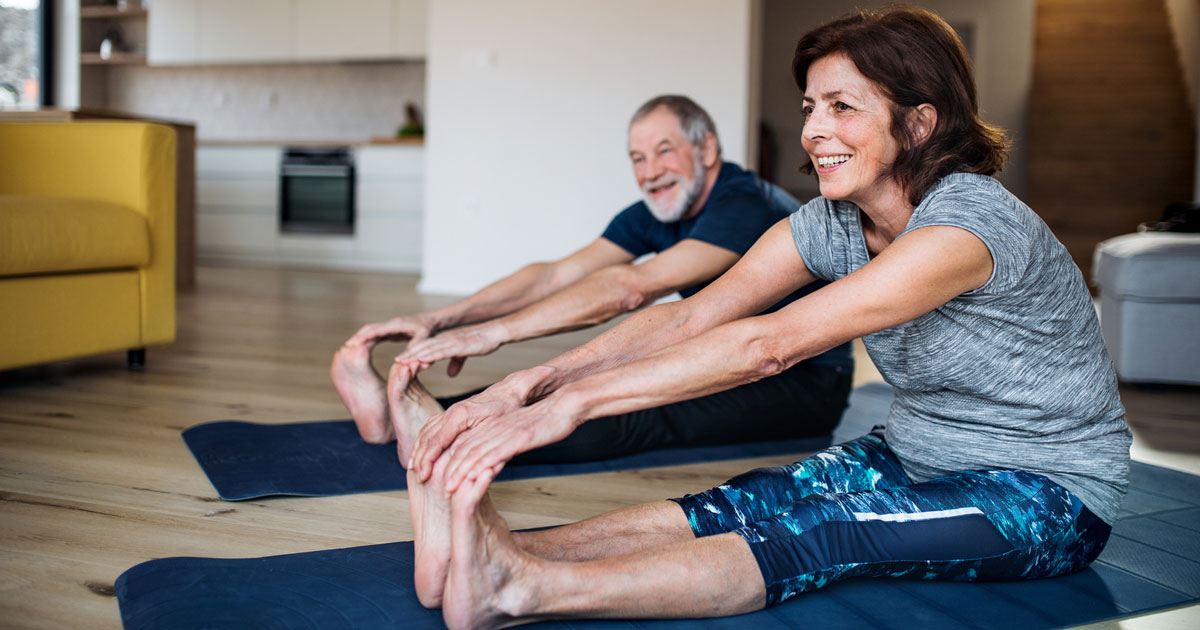
Exercise has so many benefits for seniors. If you are (or if a parent is) an adult over the age of 65, it might seem daunting to start an exercise routine from scratch — but it might actually be easier than you think to sustain an active lifestyle. By carving out just a little time every day, seniors who practice anything from chair yoga to resistance band workouts to brisk walks around the neighborhood can experience great improvements in their health and wellness.
According to the Centers for Disease Control and Prevention (CDC), older adults should be able to incorporate 150 minutes — or two and a half hours — of exercise into their weeks. This might seem like a lot, but keep in mind that this really breaks down to an average of about 20 minutes per day. And even that can be broken into smaller segments — although it is not recommended to exercise for fewer than 10 minutes at a time.
The Benefits of Exercise
Certain health conditions make it all the more important for seniors to stay active. According to American Family Physician, “Regular exercise provides a myriad of health benefits in older adults, including improvements in blood pressure, diabetes, lipid profile, osteoarthritis, osteoporosis, and neurocognitive function. Regular physical activity is also associated with decreased mortality and age-related morbidity in older adults.”
Regular exercise can also help prevent things like muscle atrophy and falls that lead to serious injury — or even trips to the emergency room.
Other benefits of exercise include:
- Greater energy
- Increased independence
- Reduced stress
- Stronger immune system
These can have a dramatic effect on someone’s quality of life, and there are seemingly no end to the number of exercises you can practice.
The Best Workouts for the Elderly
Not all exercise is created equal, so it is helpful to understand the differences in order to build a routine that is right for your body. The four main types of exercise for seniors include aerobic, strength, stretching, and balance.
Aerobic exercises are designed to get the heart rate up and improve cardiovascular health. Strength training helps build muscle, prevents muscle atrophy, and allows older adults to continue performing the daily tasks of life without difficulty. Stretching improves flexibility and can reduce the soreness that results from other forms of exercise. Finally, balance exercises provide low-impact ways to improve mobility and overall physical health.
Building all of these types into a set of exercises for seniors can allow you to maximize your health benefits with only a little bit of effort each day.

Lifestyle Exercises for Older Adults
There are so many forms of exercise that do not even feel like working out. In fact, incorporating activities into your lifestyle can be both fun and beneficial to your health. If you have a pool at home or a nearby swimming club, water aerobics provide a way to exercise without stressing joints and bones, and the natural resistance from the water helps improve strength.
Going for brisk walks offers similar benefits — it is a low-stress form of exercise that gets your heart rate up while allowing you to spend time outdoors. For people who want to really focus on endurance, cycling — whether stationary or on the road (with a helmet) — is a great option.
Some exercises can give older adults both physical and mental benefits. Tai chi, with its focus on slow and deliberate motion, is among the most popular exercises for seniors. It is also traditionally practiced in groups, so it provides a great opportunity to connect with friends. Yoga is yet another great option that improves breathing, balance, and flexibility. Chair yoga exercises are a great midpoint for older adults who struggle to fully perform traditional poses.
Strength Training and Bodyweight Workouts
Everyone’s fitness level is different, so it is important to keep in mind that strength training looks different for different age groups. Many seniors can manage weight lifting, but body weight workouts (also known as calisthenics) are also a great way to keep yourself strong and flexible. Most of these exercises require no equipment at all, and for some, all you need is a chair or a wall.
Here are just a few simple suggestions for light exercises that can help sustain muscle strength (for descriptions and video demonstrations, click here):
- Abdominal contractions – strengthens abdominal muscles
- Ankle rotations – strengthens the calves
- Heel raises – strengthens the upper calves
- Knee lifts – strengthens the thighs and improves balance
- Pelvic tilts – strengthens lower back muscles
- Shoulder blade squeezes – improves posture and stretches the chest
- Toe taps – strengthens the lower legs
- Wall push ups – strengthens the chest and shoulders
Depending on your fitness level, 5 to 20 reps should be sufficient. A full circuit can be completed in under 10 minutes, and it can serve as an excellent warm up for a 10 to 20-minute walk.
More advanced versions of strength training can include exercise with a medicine ball or resistance band workouts. Just be mindful of the number of reps that are appropriate for your body. Start with a lower number until you feel comfortable increasing your reps over time.
Stretching and Balance
Stretching is also key. This complement to strength training helps keep seniors limber, relieves tension, and improves circulation. The best part is that many stretches can be done while lying flat on the floor. Beyond stretches like bending down to touch your toes or rotating your head and neck, seniors can practice chair yoga or tai chi, which are great ways to combine stretching with body weight workouts.
Similarly, balance exercises can be a huge help. Not only can improving balance strengthen small muscles, but it can also help seniors improve mobility and avoid falls.

Exercises for Seniors to Avoid
It is important to know your limits and not overexert yourself. When it comes to strength training, it is possible to have “too much of a good thing.” Pushing yourself beyond your capabilities can lead to injury, so all exercises for seniors should be considered with that in mind. In particular, seniors with muscle atrophy, joint pain, or issues with posture and balance should avoid the following exercises:
- Abdominal crunches
- Bench press
- Deadlifts
- Distance running
- High-intensity interval training (HIIT)
- Leg press
- Power cleans
- Rock climbing
- Rowing
- Squats with weights
The good news is that injuries from exercises for seniors can be avoided. The first step is in proper preparation. Making sure that your exercise area is free of hazards (wet floors, loose items that can be stepped on or tripped over, etc.), and dressing appropriately for what you’re trying to do is the best way to start. In particular, wear the right shoes.
It is also a good idea to start off slow and monitor your body as you work your way up to higher levels of intensity. Always stop at the first sign of pain, dizziness, or a sudden spike in your heart rate.
Exercises for Older Adults
Seniors can take advantage of all sorts of exercises to help them sustain an active lifestyle. Whether it is practicing tai chi with friends or lying flat on the floor to push up into a cat stretch, there really is something for everyone. And while it might seem like hard work, the fact is that it is not as challenging as it seems. Just 20 minutes of moving through your favorite exercises each day can make a huge impact on your overall health.
It is important for seniors to take a holistic approach to managing their health as they age. Learn more about how we can help with your geriatric care.
